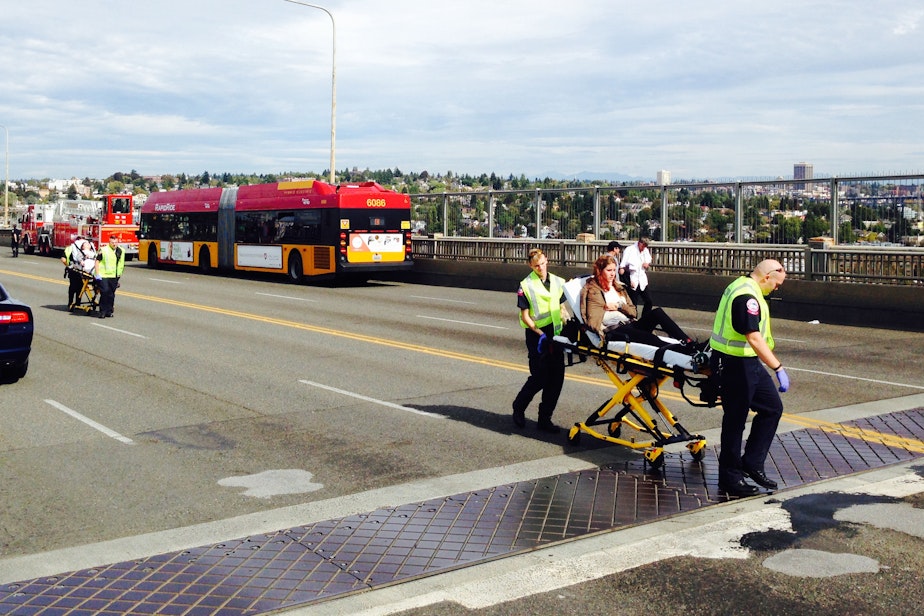Ride The Ducks Vehicle Had Faulty Axle; 5th Victim Dies

The Duck vehicle had a fatal flaw.
As investigators picked through the wreckage that killed five students and left dozens badly injured, they saw the front left axle had been sheared off.
When they spoke with the maker of the Duck vehicle, they learned that the housing around the axle was known to cause problems. The maker, Ride the Ducks International, said they had warned their customers about this bum axle in 2013.
The company also said they offered guidance on how to fix it. But the Seattle Duck never got fixed.
“I personally looked at the failure and this particular Duck did not have the fix,” said Earl Weener, a board member with the National Transportation Safety Board. Weener and his team flew into Seattle last week following Thursday’s crash.
Sponsored
Weener said the next step is to find out whether Ride the Ducks of Seattle knew about the axle problem.
Gov. Jay Inslee called Sunday for inspections of the Ducks and their drivers. The state Utilities and Transportation Commission said Monday that Ride the Ducks would be shut down until the inspections are done.
On Sunday, the company said:
We are working to understand what happened, and have completely opened our operations to NTSB investigators.
Tonight the Mayor and Governor called for a full inspection of all Ride The Ducks vehicles by the Utilities and Transportation Commission, and continued suspension of our operations while they conduct this critical work. We are in complete agreement with this recommendation. ...
We will not return any of the fleet to service until we can demonstrate that our fleet is well-maintained, road-worthy and safe through an independent inspection of every Duck vehicle we operate.
The Duck was built originally in 1945 as an amphibious World War II landing craft. It was rebuilt in 2005 to become a tourism bus that turns into a boat. There are currently 100 Ducks across the U.S.
Sponsored
On Thursday, the Duck vehicle was on the Aurora Bridge when it crossed into oncoming traffic and into a tour bus. The bus was carrying new international students enrolled at North Seattle College. Four died immediately; a 20-year-old woman died on Sunday.
The Ducks have come under scrutiny of late.
San Francisco’s Ride the Ducks franchise shut down earlier this month. At a press conference on Sunday, Weener rattled off a list of other problems the Ducks have faced.
In 1999, a Duck vehicle sank in Arkansas, drowning 13 passengers, including three children.
In December 2001, a Duck sank in Lake Union in Seattle; no one was injured.
Sponsored
“There was another accident in 2010 where a Duck was run over by a tug and barge, which resulted in a couple fatalities,” Weener continued. “So yes they've appeared on our interest list before.”
The NTSB will also use new technology to examine the Aurora Bridge. Duck vehicles can often be seen driving down Aurora, often straddling a lane.
After the collision, Seattleites took to social media to decry the bridge. Many said the lanes are too narrow and that they white-knuckle their way across. It’s unclear how wide the lanes are, as reports differ. But it appears they are different widths at different places on the bridge, between 9 feet, 3 inches wide to 10 feet. By contrast, lanes on I-5 are 12 feet wide.
“The 3-D scan of the bridge will provide additional information about the physical characteristics of the bridge including curbing, real height and lane width,” Weener said.
He said he didn’t believe it would tie up traffic, “which I have come to understand is a very sensitive subject in this town.”

